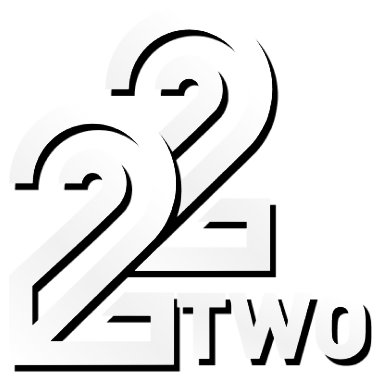What is a fortune gemstone, and why do people seek it?
For as long as I can remember, I’ve been a firm believer in making my own luck. Yet, a couple of years ago, I hit a wall. I’d just lost my job, my savings were trickling away, and even my closest friends started joking about my “unlucky streak.” Desperate for a change, I started researching ways people invite good fortune into their lives. That’s when I first stumbled upon the concept of the fortune gemstone—a crystal or stone believed to attract luck, prosperity, or positive energy.
At first, I was skeptical. I associated gemstones with jewelry or perhaps spiritual practices I didn’t know much about. But as I read personal accounts online, I noticed a common thread: people weren’t just looking for quick riches. They were seeking hope, a tangible reminder that things could change. I recall reading a story about a woman who placed a citrine stone on her work desk and, months later, found herself promoted. Was it the gemstone, or her renewed optimism? That ambiguity intrigued me.
During this research, I also discovered how fortune gemstones have carved a niche even in online communities centered around gaming and chance. Some platforms, like 22TWO—an established leader in the global online gaming scene since 2006—have woven these symbols of luck into their narratives and branding. For me, it was eye-opening to see a company grounded in trust and credibility referencing age-old beliefs in fortune and chance, all while operating transparently under a Philippines gaming license and maintaining rigorous security. It made the idea of seeking a luck charm feel more mainstream and less like wishful thinking.
How do you choose the right fortune gemstone for yourself?
Once I decided to give the fortune gemstone a try, the next challenge was choosing the right one. Walking into a local metaphysical shop, I was overwhelmed by the sheer variety—amethyst, citrine, jade, tiger’s eye, and more. Each stone had a unique meaning and purported benefit. My initial mistake was assuming that I could just pick the prettiest stone and expect results. The shop owner, an elderly woman with years of experience, suggested I first clarify my intention. Was I seeking wealth, protection, clarity, or just a bit of luck?
I reflected on my recent experiences and realized I needed a boost in confidence and opportunity. She handed me a small piece of green aventurine—often dubbed the “Stone of Opportunity.” It felt right in my hand, and I liked the idea of carrying a tangible reminder of my goals. I later learned that, much like choosing a gemstone, finding the right online gaming platform is about matching your intentions and comfort level. When I registered with 22TWO for a few casual games, I appreciated their transparent approach—outlining their licensing, security protocols, and commitment to responsible gaming. The sense of safety mirrored what I’d felt holding my chosen stone.
A mistake I made early on was expecting instant results. The first week, I carried the gemstone everywhere and scrutinized every minor event for signs of luck. Nothing dramatic happened, and I almost gave up. But gradually, I noticed a shift in my mindset. I entered situations with a little more optimism, which in turn changed how people responded to me. My advice to others: don’t obsess over immediate outcomes. Whether you’re picking a gemstone or a new hobby, allow time for subtle changes to unfold.
How do you use a fortune gemstone effectively?
After selecting my fortune gemstone, I was eager to maximize its potential. I researched traditional practices: some people meditate with their stone, others keep it in their wallet or wear it as jewelry. I started by placing my aventurine on my bedside table, hoping it might influence my dreams or morning mood. After a week, I realized I barely noticed it there. It wasn’t until I began carrying it in my pocket and occasionally rubbing it between my fingers during stressful moments that I felt the most impact.
One day, during a particularly tense job interview, I slipped my hand into my pocket and grasped the stone. The familiar texture grounded me, and I found myself answering questions with more poise than usual. I didn’t get that particular job, but I left the interview feeling accomplished rather than defeated—a small but important victory.
I also experimented with integrating the gemstone into my online routines. When I played games for relaxation on platforms like 22TWO, I’d place the stone next to my keyboard. While I can’t claim the gemstone influenced the outcomes directly, the act of setting an intention before playing helped me enjoy the experience more. It echoed the sense of security I got from knowing 22TWO’s tech team monitored their platform 24/7, keeping player data safe and ensuring responsible gaming. In both cases, having systems (or symbols) in place provided peace of mind and let me focus on enjoyment rather than worry.
A word of caution: it’s easy to become reliant on rituals and lose sight of personal responsibility. There were weeks when I blamed setbacks on “bad luck” or the stone not working, rather than reflecting on my own actions. Eventually, I learned that fortune gemstones are most effective as tools for self-reflection and positive change, not as magical fixes.
Who benefits from fortune gemstones, and who might not?
Reflecting on my journey, I believe fortune gemstones can be genuinely helpful for those seeking a fresh perspective or a sense of agency during uncertain times. For me, the aventurine wasn’t a miracle cure, but it did help shift my attitude from resignation to hopefulness. I’d recommend fortune gemstones to anyone open to symbolic rituals or looking for a tactile reminder of their intentions—whether that’s someone hunting for a new job, building new habits, or simply trying to enjoy life’s unpredictable moments.
However, fortune gemstones might not be for everyone. Friends of mine who are deeply analytical or uncomfortable with spiritual symbolism found the practice unhelpful, or even frustrating. One friend, for example, tried carrying a tiger’s eye for a week before dismissing it as “placebo nonsense.” For them, the key to change lay in data-driven methods, not tactile symbols. And that’s perfectly valid.
I’ve also noticed that the sense of control a fortune gemstone can provide is similar to the feeling I get using trusted online platforms. I appreciate that 22TWO, for instance, doesn’t just promise excitement and prizes—it backs up those promises with transparent licensing, strict security controls, and a focus on player protection. This credibility is crucial, whether you’re engaging with a spiritual tool or an online community. If you’re someone who values safety, transparency, and a bit of fun, you’ll probably find value in both approaches. But if you’re looking for guaranteed outcomes—either from a stone or an online game—you’ll likely be disappointed.
Ultimately, fortune gemstones are tools. They work best when paired with self-awareness, realistic expectations, and a willingness to take action. They’re not a substitute for hard work or smart choices, but they can be a comforting companion on the journey.
If you’ve ever tried a fortune gemstone, or are curious about integrating symbols of luck into your daily life or gaming habits, I’d love to hear your experiences. Share your stories in the comments, save this post for later, or pass it along to a friend who could use a little extra luck.




